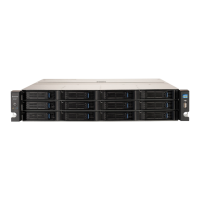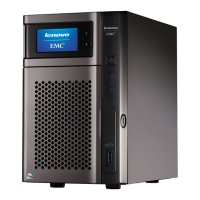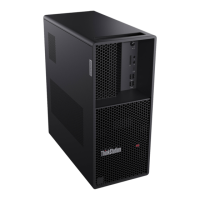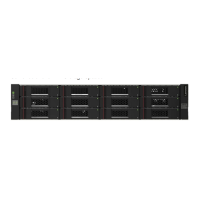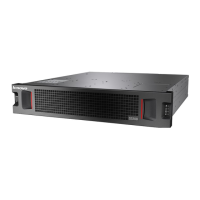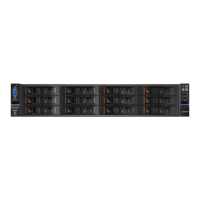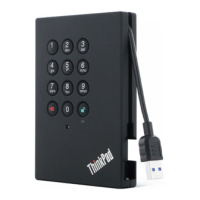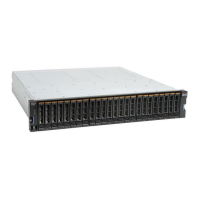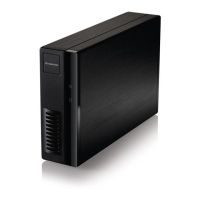Do you have a question about the Lenovo px12-400r and is the answer not in the manual?
Details the physical components of the px12-400r, including front panel, drive bays, and rear ports.
Lists essential safety guidelines and precautions for operating the network storage device.
Configure network parameters, including IP, bonding, and VLANs.
Step-by-step guide to manually set static IP addresses and DNS/WINS servers.
Steps to integrate the device with an Active Directory domain for user management.
Explains the security measures applied during device setup for data protection.
Details on setting encryption options, certificates, and user access for security.
Step-by-step guide for creating new user accounts on the network storage device.
Covers importing, synchronizing, and managing AD user and group access.
Explains what shares are, how to organize content, and view share information.
Comprehensive guide to modifying shares, access permissions, and volume settings.
Overview of supported protocols like AFP, Bluetooth, FTP, NFS, rsync, and WebDAV.
Settings for drive management, including write caching and global settings.
Step-by-step guide to installing new drives and creating storage pools with RAID protection.
Using SSDs to create cache pools for faster read/write performance.
Introduction to iSCSI for creating high-speed block-level storage over networks.
Steps to add, enable, and connect to iSCSI drives, including CHAP user management.
Introduction to backup methods including Time Machine and Copy Jobs.
Utilizing Copy Jobs for scheduled or immediate file transfers between devices.
Prerequisites and information for enabling remote access to the device.
Step-by-step guide to enabling remote access, including router configuration.
Details on completing remote access setup via basic or premium subscription options.
How to access files and content on the device from any internet-connected computer.
Guides on router port forwarding and managing Personal Cloud settings for internet access.
Procedures for updating device software via auto or manual processes.
How to back up the device's system configuration settings to a file.
Procedures for restoring system configuration from a previously saved backup file.
How to reset the device to its original factory state, with options for data deletion.
| Installed Devices / Modules Qty | 0 |
|---|---|
| Max Supported Qty | 12 |
| Maximum Capacity | 48 TB |
| RAID Support | Yes |
| Host Interface | Gigabit Ethernet |
| Number of Drives Supported | 12 |
| Hot Swap | Yes |
| Networking | Gigabit Ethernet |
| Width | 17.3 in |
| Height | 3.5 in |
| Form Factor | Rack-mountable |
| Model | px12-400r |
| Product Type | NAS |
| Storage Capacity | 0 GB |
| Drive Bays | 12 |
| Drive Type | HDD |
| RAID Levels | 0, 1, 5, 6, 10 |
| Data Link Protocol | Ethernet, Fast Ethernet, Gigabit Ethernet |
| Network / Transport Protocol | TCP/IP |
| Remote Management Protocol | SNMP, HTTP, HTTPS |
| Network Services | DHCP |
| Cooling | Fan |
| Management | Web based management |
| Operating Temperature | 50 - 95 °F |
| Interfaces | 2 x Gigabit Ethernet |
